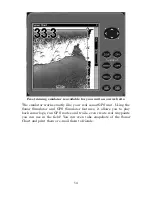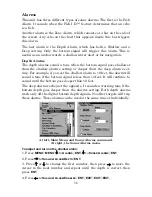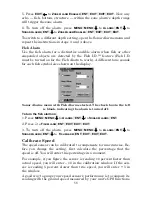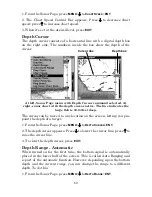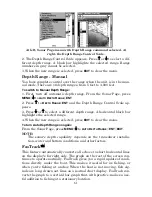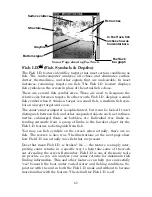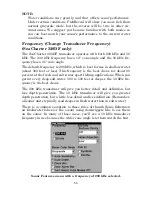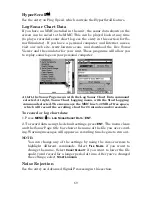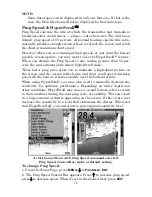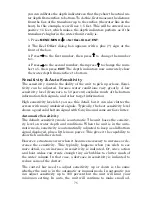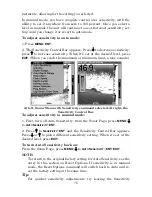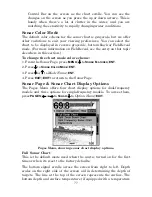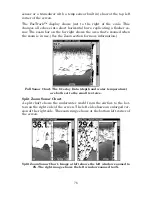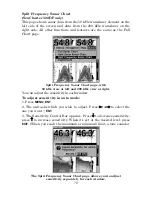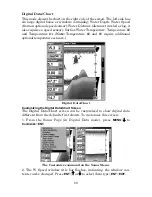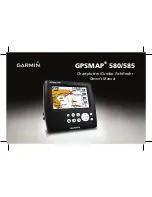
66
NOTE:
Water conditions vary greatly, and that affects sonar performance.
Under certain conditions, FishReveal will show you more fish than
normal grayscale mode, but the reverse will be true in other cir-
cumstances. We suggest you become familiar with both modes so
you can best match your sonar's performance to the current water
conditions.
Frequency (Change Transducer Frequency)
(SeaCharter 320DF only)
The SeaCharter 320DF transducer operates with both 200 kHz and 50
kHz. The 200 kHz frequency has a 12
°
cone angle and the 50 kHz fre-
quency has a 35
°
cone angle.
The default frequency is 200 kHz, which is best for use in shallow water
(about 300 feet or less). This frequency is the best choice for about 80
percent of the fresh and salt water sport fishing applications. When you
get into very deep salt water, 300 to 500 feet or deeper, the 50 kHz fre-
quency is the best choice.
The 200 kHz transducer will give you better detail and definition, but
less depth penetration. The 50 kHz transducer will give you greater
depth penetration, but a little less detail and less definition. (Remember,
all sonar units typically read deeper in fresh water than in salt water.)
There is a common exception to these rules of thumb. Some fishermen
on freshwater lakes (or the ocean) using downriggers like to see them
on the sonar. In many of those cases, you'll see a 50 kHz transducer
frequency in use because the wider cone angle lets them watch the bait.
Sonar Features menu with a frequency of 200 kHz selected.
Summary of Contents for FishElite 320
Page 20: ...12 Notes ...
Page 98: ...90 Notes ...
Page 142: ...134 Notes ...
Page 172: ...164 Notes ...
Page 193: ...185 Notes ...
Page 194: ...186 Notes ...



